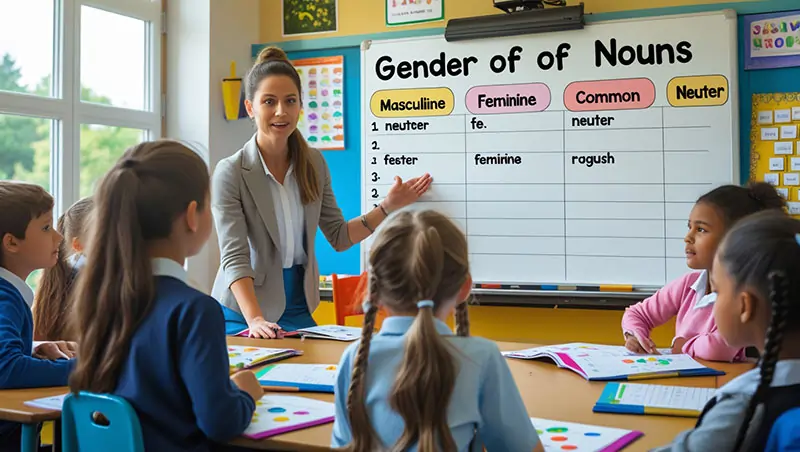Guidelines For Teachers And Administration On Data-Driven Decision-Making In Education

Teachers and educational organizations have traditionally gathered and used data in one way or another, whether entering grades and progress in grade books to determine final grades or looking at test results to gauge district-wide performance. However, the chances for educators to use data and analytics to enhance education have considerably risen thanks to modern technology. As they offer a valuable lesson, teachers have the tools to monitor their students’ understanding in real-time, or they can give them the results of homework assignments so they can organize their upcoming sessions.
Data-driven decisions in education can drastically improve instructor response to students, free up teachers’ time, and guarantee that the material being taught is pertinent. Different people use statistics to inform their decisions in the field of education. Therefore it is important to know about the Ed-Fi Data Standard that is prevalent in major districts as it provides data interoperability and maintains student information. As an element of their reflective teaching practices, teachers use data. Teachers observe, draw conclusions every school day, and modify their instruction.
Collaboration methods are used in schools to make data function for them. Educators and administrators may look at standardized test results, attendance statistics, and behavior data to make recommendations for their schools. These procedures can spot children slipping between the cracks, show where the curriculum is lacking, and improve curriculum alignment between departments and grades.
Advice For Using Data In Education
If administrators and educators keep the following suggestions in mind, then data can become a very useful tool.
Utilize Data To Learn About Historical Events
To establish a foundational understanding of children, teachers should consult historical data. Data from the past reveals the skills that students have mastered and the places where there have been breakdowns. Teachers could use this data as a crucial road map when deciding what skills to impart next and where students might need more support.
Many districts use standardized tests to determine if a kid is advanced, proficient, basic, or below basic. Knowing this helps teachers understand why one class in a grade level might not be progressing as quickly as another. The information also aids teachers in providing pupils with accommodations.
For instance, teachers may relocate children working below grade level to the front of the class where they can easily obtain additional assistance. Alternatively, they can provide more difficult activities as alternatives for advanced students.
Utilize Both Quantitative And Qualitative Data
To assess student success, educators ought to combine several sorts of data. It is often missed opportunities to learn useful information about a student’s skills, limitations, and preferences by considering solely data from an end-of-unit exam.
Thumbs-up and thumbs-down monitoring and other straightforward formative assessments can help teachers gauge student involvement and comprehension quickly. By observing students ‘ interpersonal and social successes, teachers can learn what projects students prefer and with whom they tend to work best. This knowledge is helpful when putting students into groups for collaborative work or organizing lessons.
Recognize The Limitations Of What Data Can Tell You
Teachers must evaluate the potential uses of data. Some facts may be useful in addressing one topic but not another. For instance, a teacher might look at data indicating a certain set of kids come from economically challenged backgrounds. That could provide some light on why those students underperform academically, but it does not address why a student performed poorly on an exam.
Teachers can diagnose issues more precisely and respond to them by understanding the appropriate and inappropriate data uses. For instance, a teacher may overlook the real cause of the results and thus be unable to provide the necessary solutions if they just ascribe a student’s bad performance on a test to knowledge about their past.
Learn How To Utilize Statistics And Insights To Raise Student Performance
Teachers can pinpoint factors influencing student success and failure by conducting the proper data analysis. Teachers can devise strategies to address those causes after they have been identified. For instance, by studying a struggling student’s homework scores and test results, a teacher may learn crucial information about areas of comprehension that need improvement or, possibly, which question types are difficult for the student. A teacher can then create workouts and activities for pupils in their problem areas to assist them in performing better after making such discoveries.
Key Takeaways
The Ed-Fi Education data standard, which is interoperable across all districts and is an open solution that offers integration with different education technology, has made it simpler to make data-driven decisions in the field of education. This has allowed schools, districts, and teachers to provide students with the proper instruction and guidelines for academic success, professional development, and individual growth.
The education sector has undergone significant change due to the use of data technologies to uncover hidden trends and insights or simply to assist teachers in organizing and identifying areas where interventions are required. The greatest approach for all educational institutions is to keep it available for analysis and student information.



